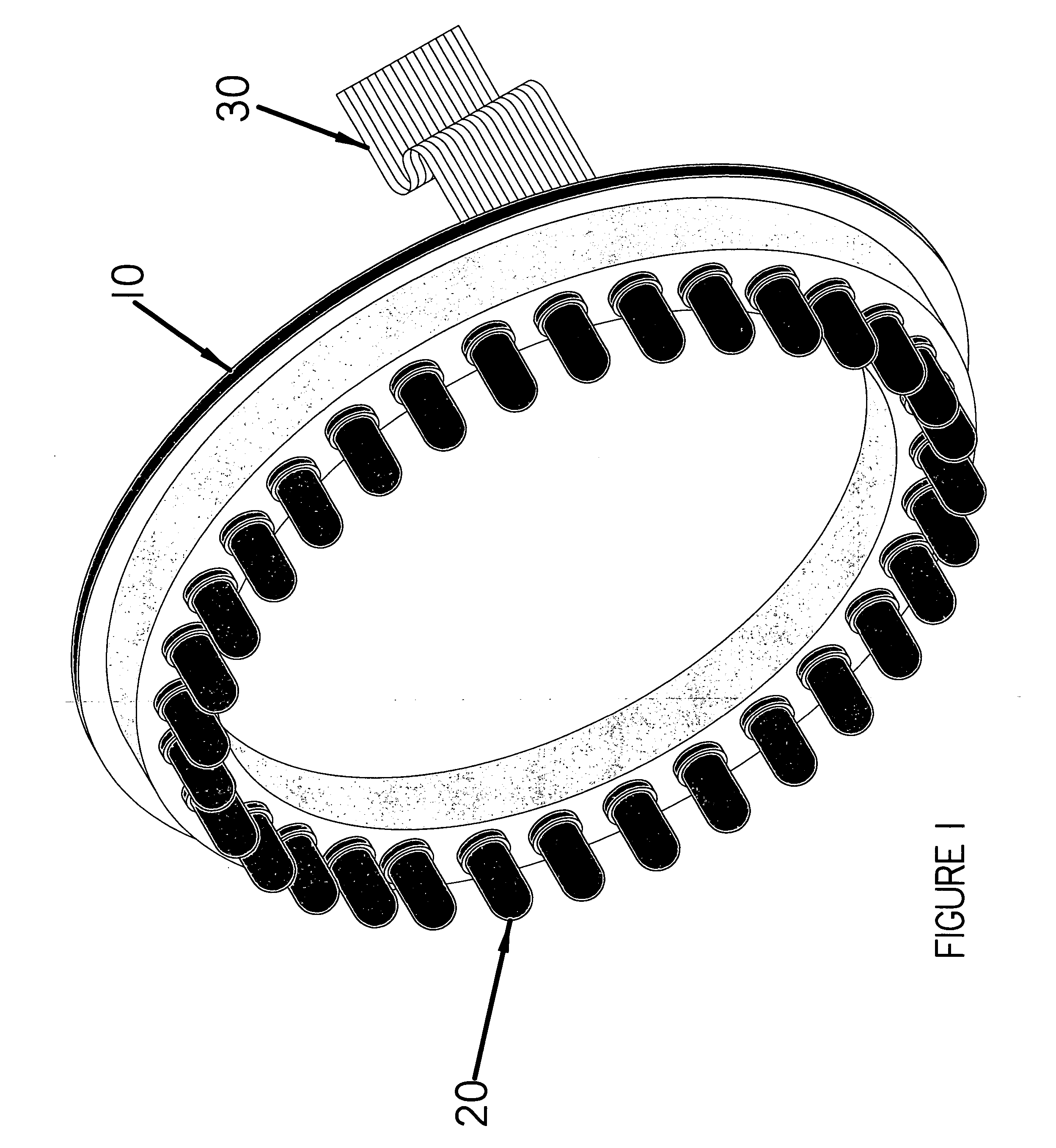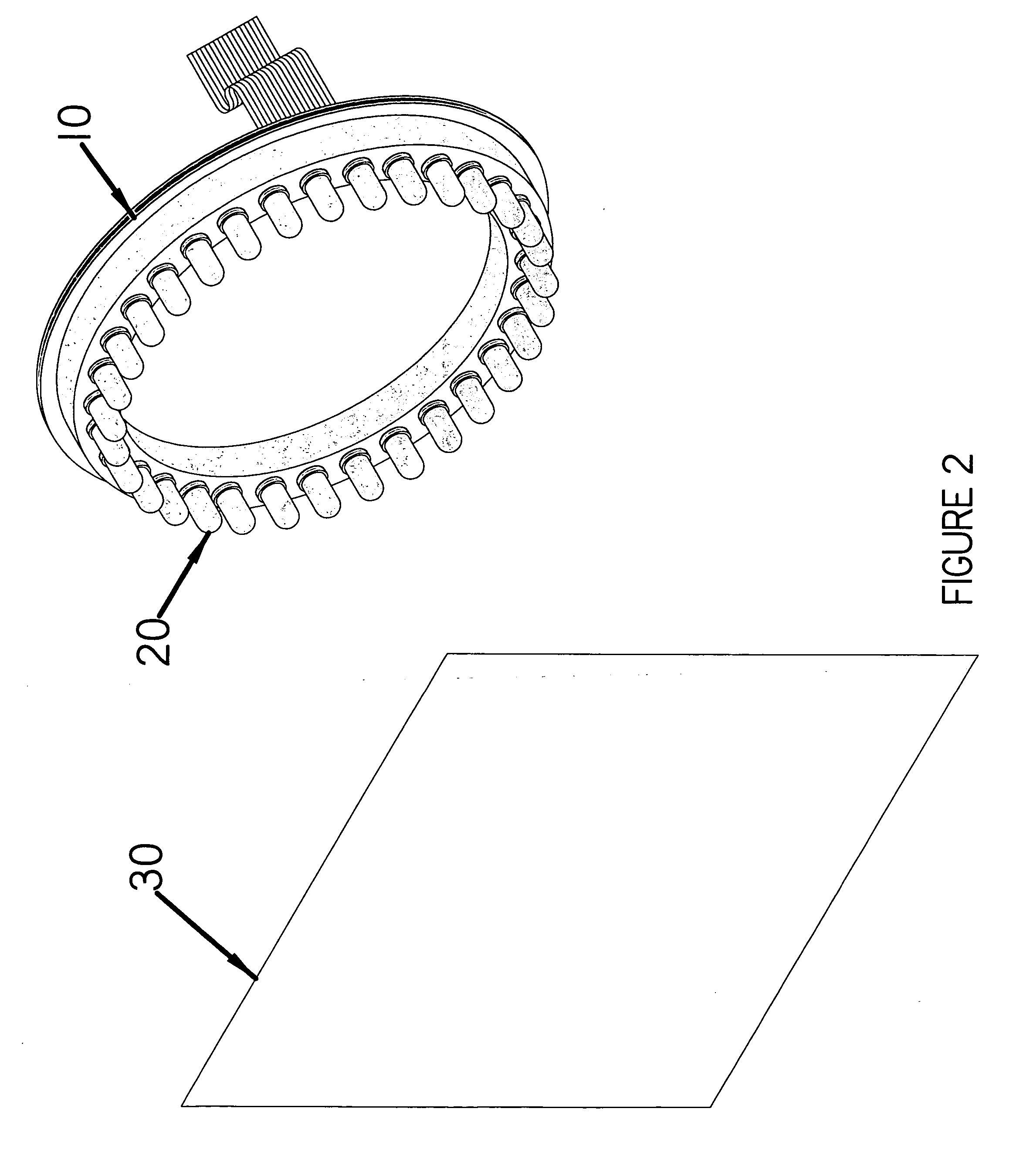Method of using light emitting diodes for illumination sensing and using ultra-violet light sources for white light illumination
a technology of light emitting diodes and illumination sensing, applied in the direction of optical radiation measurement, instruments, lighting support devices, etc., can solve the problems of inability to utilize lighting, and inability to brighten illumination sources at the expense of inefficient use of supplied power
- Summary
- Abstract
- Description
- Claims
- Application Information
AI Technical Summary
Benefits of technology
Problems solved by technology
Method used
Image
Examples
Embodiment Construction
[0018] The use of ordinary LED's to produce light has long been established, and is widely known. The use of these same light producing LED's as light sensors is not as widely known. In the early 1990's, Forrest M. Mims III was experimenting with utilizing LED's as narrow wavelength detectors. When studying atmospheric haze, a wide band photodiode is used in conjunction with a narrow band optical filter. This allows the user to analyze a single, or a relatively small number of frequencies. A single frequency of light is a valuable analysis tool when measuring haze in the atmosphere. The use of LED's as selective narrow band wavelength sensors has the advantage of greater stability over the life of the device, and lower cost, since the LED does not require a narrow band filter—it IS a narrow band filter and detector.
[0019] In contemporary illumination sources for machine vision, medical imaging, digital photography, etc., an incandescent light source is commonly used, or a ring of c...
PUM
 Login to View More
Login to View More Abstract
Description
Claims
Application Information
 Login to View More
Login to View More - R&D
- Intellectual Property
- Life Sciences
- Materials
- Tech Scout
- Unparalleled Data Quality
- Higher Quality Content
- 60% Fewer Hallucinations
Browse by: Latest US Patents, China's latest patents, Technical Efficacy Thesaurus, Application Domain, Technology Topic, Popular Technical Reports.
© 2025 PatSnap. All rights reserved.Legal|Privacy policy|Modern Slavery Act Transparency Statement|Sitemap|About US| Contact US: help@patsnap.com



